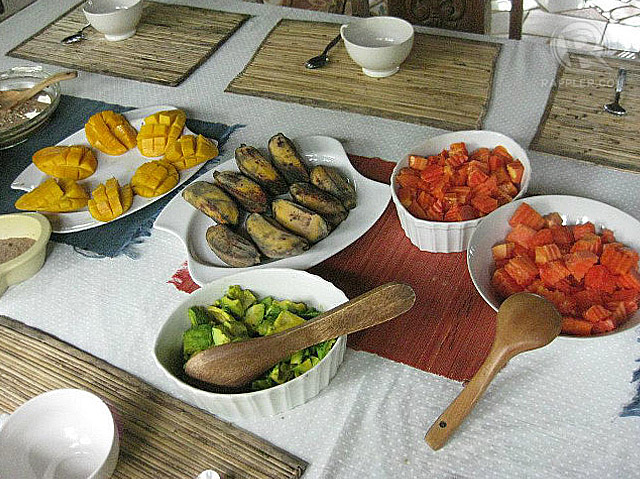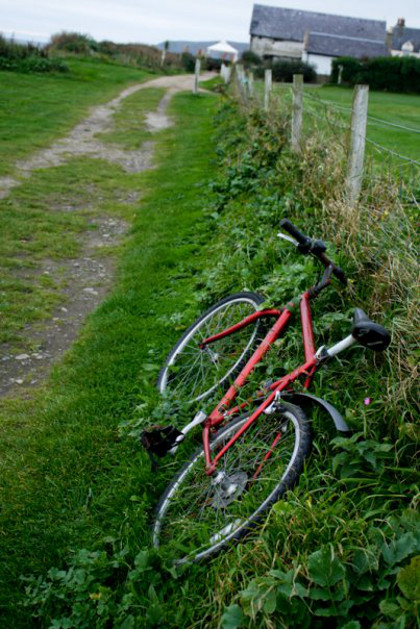SUMMARY
This is AI generated summarization, which may have errors. For context, always refer to the full article.

MANILA, Philippines – Going green, like any lifestyle change, may seem like a daunting task for many.
But what better time to give it a try than at the start of a new year?
The trick to making big changes is to start with small ones, taking baby steps before that giant leap. Blythe Copeland, writer for the Mother Nature Network, lists down 10 easy steps that will save you money, cut your carbon footprint and make you and your family healthier.
As promised, these eco-resolutions require minimum effort, leaving you no excuse not to fulfill that worthwhile commitment of living in harmony with Mother Nature.
# 1 – Exchange water in plastic bottles for a filter and reusable water bottles
It’s time to crack that habit of buying bottled water for convenience, a seemingly harmless practice that nevertheless contributes to the 1.5 million barrels of oil used to make plastic water bottles.
Instead, buy water filter pitchers, water containers that usually hold a gallon of water and use minerals to filter out dirt and harmful contaminants in tap water. They’re easy to use and even more convenient than plastic water bottles. No longer will you have to make last-minute trips to the grocery. Instead, grab your filter pitcher and open the faucet over it.
Supplement this eco-friendly habit by purchasing reusable water bottles. The great variety of designs ensures there’s something that fits your personality and lifestyle. Sure beats carrying a plain, crackly plastic bottle around.
# 2 – Brew coffee out of locally-harvested beans
Buying locally-harvested coffee beans instead of imported ones supports Filipino farmers and makes a dent on the barrels of fuel used to transport imported coffee beans. Mix in organic milk instead of artificial creamers.
For the completely green morning routine, use a French press instead of a coffee maker. It doesn’t need to be plugged in, saving energy and cutting down those electricity bills. It saves paper too because it doesn’t need paper filters.
Bring out your coffee in an insulated travel mug or tumbler and lessen the amount of cardboard cups and carrying sleeves thrown each year, an eye-popping 58 billion.
ALSO READ: Resolutions for an organized 2013
# 3 – Bring a reusable bag everywhere you go
Purchasing a reusable bag is a laudable effort to reduce the more than 1 million plastic bags thrown out every minute, but the bigger challenge is remembering to bring them.
Buy a reusable bag that is foldable and highly packable, making it easy to tuck in your bag and forget about until you have to do your shopping.
# 4 – Cut back on paper towels
Three thousand paper towels are thrown in the trash every day, no doubt because many of us use paper towels for everything: wiping our hands after washing, cleaning a spill, picking up something gross.
Instead, purchase a set of cotton cloths or fabric napkins. They may be pricier than a pack of paper napkins but they’ll save you more in the long run because you only need to buy them once.
When they’re dirty, throw them in the laundry and use them again tomorrow.
ALSO READ: Facebook hoaxes: Some advice for 2013
# 5 – Make short trips on a bike
If you aren’t ready to jog to the neighborhood laundry, cafe or sari-sari store, instead of taking the more relaxing car ride, go for the in-between solution by taking a bike.
This is manageable for distances of 3 kilometers or less and for trips that don’t require you to carry too much stuff.
This eco-resolution hits 3 birds with one stone: you save money, reduce your carbon footprint and become fitter.

# 6 – Order a food box from your local CSA (community-supported agriculture)
While CSA is much more popular in the US and Europe, CSAs have been cropping up in some areas in the Philippines as well, areas nearer to you than you might think (an option is organic product-delivery enteprises, such as Emporium Antipolo).
Community-supported agriculture is a locally-based model of agriculture and food distribution in which individuals in a community pledge money to support a local farm. In exchange, boxes of produce, meat and sometimes even dairy products are sent to patrons who benefit from the farm’s fresh food.
Buying food from nearby farms instead of imported produce from groceries reduces your carbon footprint and supports your local farming community.
You’d be surprised to know that CSA is already being practiced in Metro Manila. Check out http://www.organicmanila.com/services.php for more details. Be sure to inquire about their farming techniques to ensure that their methods are truly organic.
If you can’t find one near you, make it a weekly routine to shop at the nearest weekend market. You may have to wake up extra early but your body and wallet will benefit from the fresh produce displayed in the market stalls.
# 7 – Become a weekend vegetarian
Can’t commit to a lifetime of greens? Take a step back for now and commit only your weekends.
Not eating meat for two days every week reduces your carbon footprint by about a third of a ton. Recipes for yummy, vegetarian meals are not as hard to come by as you might think. Try fruits and pancakes for breakfast, veggie pizza or veggie sandwiches for lunch or creamy risotto for dinner.
Online recipe sites are a rich repository for fun, out-of-the-box all-green dishes. There are even raw food recipe sites in the Philippines, such as raw food chef Daniw Arrazola’s blog.
ALSO READ: Choose your food, save the planet
# 8 – Cut down on pointless energy usage
Many of us are guilty of leaving our gadgets charging way past a full battery or leaving our appliances on for the entire day even when we don’t use them.
Be innocent of this charge by buying energy-efficient chargers that stop drawing current when your gadget’s battery is fully-charged. Power strips that turn off your appliances all at once are also a good investment. Put your air-conditioning system on timer so that it shuts off at strategic times at night.
All these little tweaks in daily energy usage can lessen your electricity bill by as much as 10% annually.
# 9 – Turn on the green switch
You don’t need to install solar panels, a tankless water heater or geothermal heat pumps for this. The green switch is as easy as calling your energy company and asking if they offer renewable energy options.
It might be more expensive than regular energy but it’s a small price to pay for a more responsible lifestyle.
ALSO READ: The house of happiness (Check out the solar lights!)
# 10 – Use compact fluorescent light (CFL) bulbs
Merely changing your light bulb can do wonders to your electricity bill and carbon footprint.
CFLs use 60% to 80% of the energy used by incandescent light bulbs and last 6,000 to 15,000 hours compared to an incandescent bulb’s 1,000 hours.
All in all, a CFL bulb can save 2,000 times its weight in greenhouse gas emissions. – Rappler.com
Add a comment
How does this make you feel?
There are no comments yet. Add your comment to start the conversation.